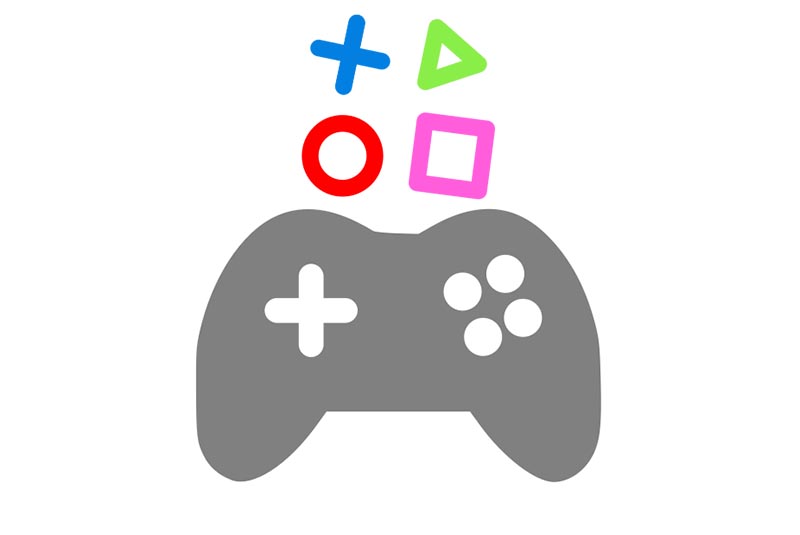
The ODROID-XU4 is a single-board computer (SBC) that rivals the Raspberry Pi. Its specifications boast beefier performance capabilities than the Pi with an octa-core CPU, twice the RAM, and an eMMC module. Like the Raspberry Pi, the ODROID-XU4 runs a bevy of operating systems including RetroPie, Ubuntu MATE, and RecalBox. Let’s learn how to get started with Recalbox on the ODROID-XU4 for retro gaming!
What is Recalbox?
Recalbox is a Linux-based retro gaming operating system (OS), similar to RetroPie. It’s based on RetroArch and uses the EmulationStation front-end. However, Recalbox is more targeted to beginners than RetroPie, because Recalbox offers simplified settings, such as fewer shaders and less customization options. On the ODROID-XU4, Recalbox delivers optimal performance and more demanding titles, although you’ll find there’s no Advance MAME, Amiga 1200, or Amiga 600 support. However, when running Recalbox on ODROID-XU4 boards, you’ll see 3DO compatibility, a system notably absent on the Raspberry Pi.
When comparing RetroPie versus Recalbox versus Lakka, Recalbox is easier to set up than RetroPie and Lakka, yet not as comprehensive in its configuration options.
Pros:
- Easy to set up
- Great system compatibility on ODROID-XU4
- Stable
- Includes Kodi media center for home theatre PC (HTPC) use
Cons:
- Fewer customization options
- May leave power users wanting
Materials
 Installing Recalbox on the ODROID-XU4 is fairly simple. You only need the ODROID-XU4 board, a compatible 5V/4A power supply (PSU), eMMC module or microSD card running the ODROID-XU4 Recalbox image, and an optional but recommended case.
Installing Recalbox on the ODROID-XU4 is fairly simple. You only need the ODROID-XU4 board, a compatible 5V/4A power supply (PSU), eMMC module or microSD card running the ODROID-XU4 Recalbox image, and an optional but recommended case.
- ODROID-XU4 board
- 5V/4A Power supply unit
- Case
- Memory card
- Extraction program (i.e. 7Zip)
- Image mounting program (i.e. Etcher)
The ODROID-XU4 is available standalone for $60USD from Hardkernel (https://www.hardkernel.com/main/products/prdt_info.php?g_code=G143452239825) Add on a few accessories such as a power supply, microSD card, and an ODROID-XU4 case, and the price ends up around $90USD.
But for that price, you’ll gain a single-board computer with an octa-core processor and 2GB of RAM. In real-world tests, the ODROID-XU4 bested the Raspberry Pi 3 B+ when playing system intensive ROMs such as PlayStation Portable (PSP), Nintendo 64 (N64), and Sega Dreamcast games.
Total cost: $62 (board only), $90 (board with accessories)
Installation
First, head over to the Recalbox website and download the latest release for the ODROID-XU4. From the list of downloads, snag the ODROID-XU4 image.
Since it’s an img.xz file, you’ll need to use a program like 7Zip to extract the image file. When you’ve uncompressed the img.xz, you’ll be left with an image file.
Next, you’ll need to mount the image file to bootable media such as an eMMC module or microSD card. For my Recalbox on ODROID-XU4 install, I used a microSD card. Use a program such as Etcher to mount the image on your installation medium.
After you’ve burned the ODROID-XU4 Recalbox image to a microSD card or eMMC module, pop it into the correct slot on your ODROID-XU4 single-board computer and start it up. It should boot straight into the Recalbox EmulationStation front end.
Post-installation setup
When you’ve successfully booted into Recalbox on the ODROID-XU4, you’re ready to begin playing retro games. However, it’s best to perform a bit of post-installation configuration. While you can store your game ROMs on your microSD card or eMMC module, you may wish to store them on an external drive such as a USB stick. I store my ROMs on a 256GB flash drive. To accomplish this, open the main menu. From there, navigate to System Settings > Storage Device. Then, you can pick from Internal, a specific drive, or Any External.
With an external drive plugged in, select that drive, which will appear under the storage device menu as its size, such as 64GB or 128GB. Then, shut down your system, remove the USB stick, and plug it into a PC. You’ll find a Recalbox folder with folders for your BIOs and ROMs. This way, if your Recalbox file system gets corrupted, you lose your microSD card, or simply want to perform a fresh installation, your ROMs and BIO are preserved.
Performance gains
Just like the ODROID-XU4 RetroPie release, you’ll notice far better performance from system intensive titles like PSP, N64, and Dreamcast ROMs. Out of the box, PSP games run fairly well on the ODROID-XU4 running Recalbox. While the likes of God of War: Chains of Olympus are tough to emulate, it is somewhat playable albeit with a lower framerate. Games such as Burnout Legends play well, though the Mali GPU on the ODROID-XU4 does occasionally cause a few video glitches which don’t hamper gameplay.
Dreamcast games run at full speed. Like with the PPSSPP emulator, you’ll occasionally notice a few very minor video glitches such as strange lines under the Dreamcast Reicast emulator. N64 titles on the ODROID-XU4 Recalbox release run far better than on the Raspberry Pi 3. Despite some games refusing to run at full speed, including Conker’s Bad Fur Day, performance trounces the Pi, and games such as one of my personal favorites, Goldeneye 64, are very playable. Ultimately, the ODROID-XU4 does sport much-improved performance over a Raspberry Pi 3 single-board computer.
Final thoughts
Overall, Recalbox on the ODROID-XU4 is a fantastic option for retro gaming on the ODROID-XU4. Because of its octa-core processor and 2GB of RAM, twice that of the Raspberry Pi 3, the ODROID-XU4 features enhanced support for more demanding titles like PSP, N64, and Dreamcast games. Additionally, the Recalbox for ODROID-XU4 release provides 3D support, which is not included on the Raspberry Pi 3 Recalbox image.
The ODROID-XU4 Recalbox image is easy so set up. Simply mount the image to a microSD card or eMMC module, pop it into the ODROID-XU4, and boot it up. Though RetroPie is available on the ODROID-XU4, you’ll have to slog through installing it in an operating system such as Ubuntu. Alternately, there is a standalone RetroPie for ODROID-XU4 image but it’s created and maintained by ODROID Arena, not the official RetroPie project. Recalbox offers an official ODROID-XU4 image, which is a major plus. Power users may prefer RetroPie for ODROID-XU4 since it includes an array of custom shaders and more configuration options than Recalbox. Nevertheless, I’m thrilled with the ease of use from installation to setup and gameplay that Recalbox on the ODROID-XU4 provides.

Be the first to comment